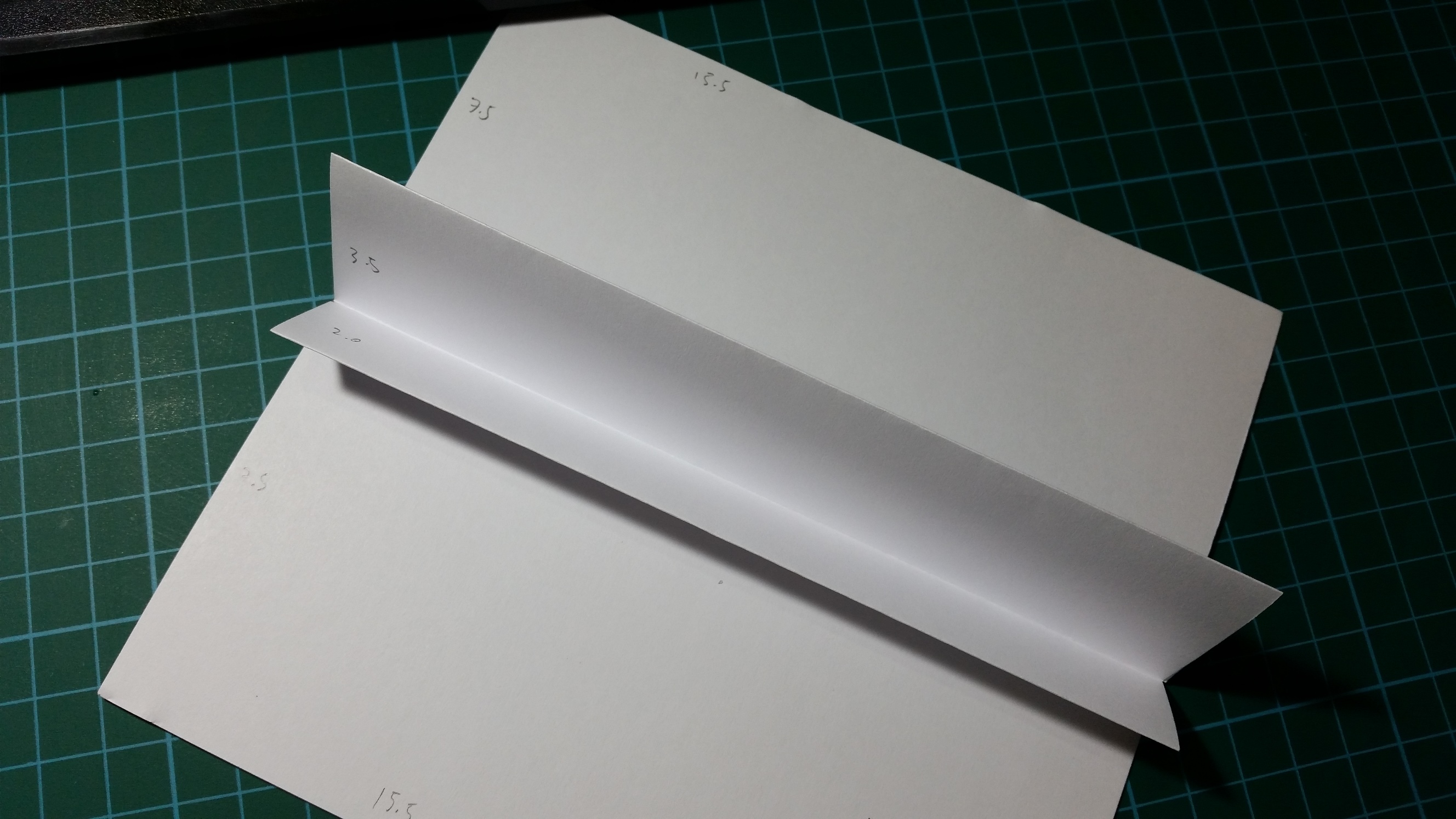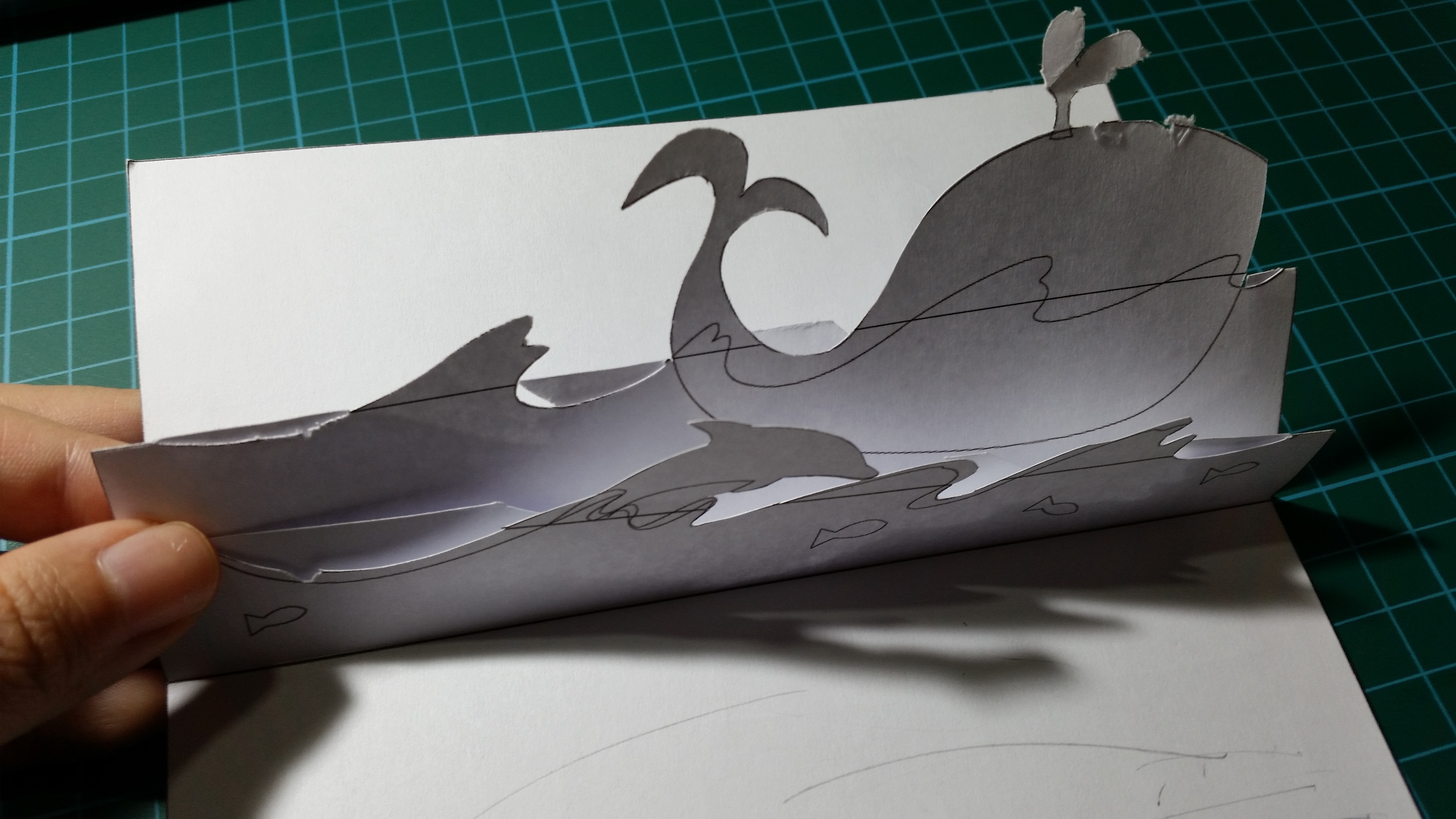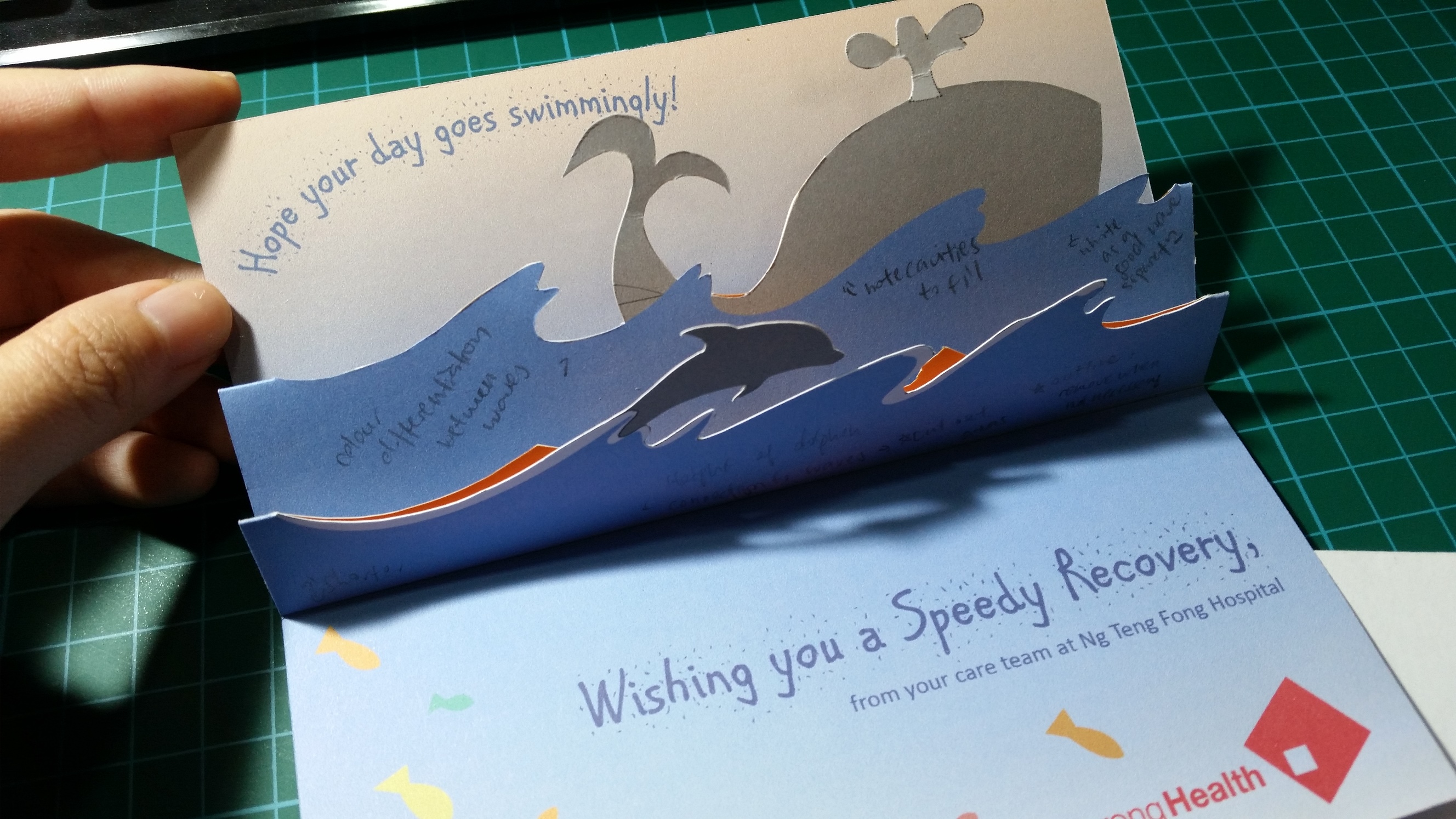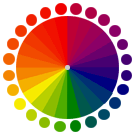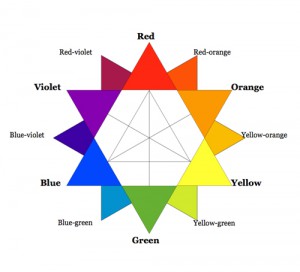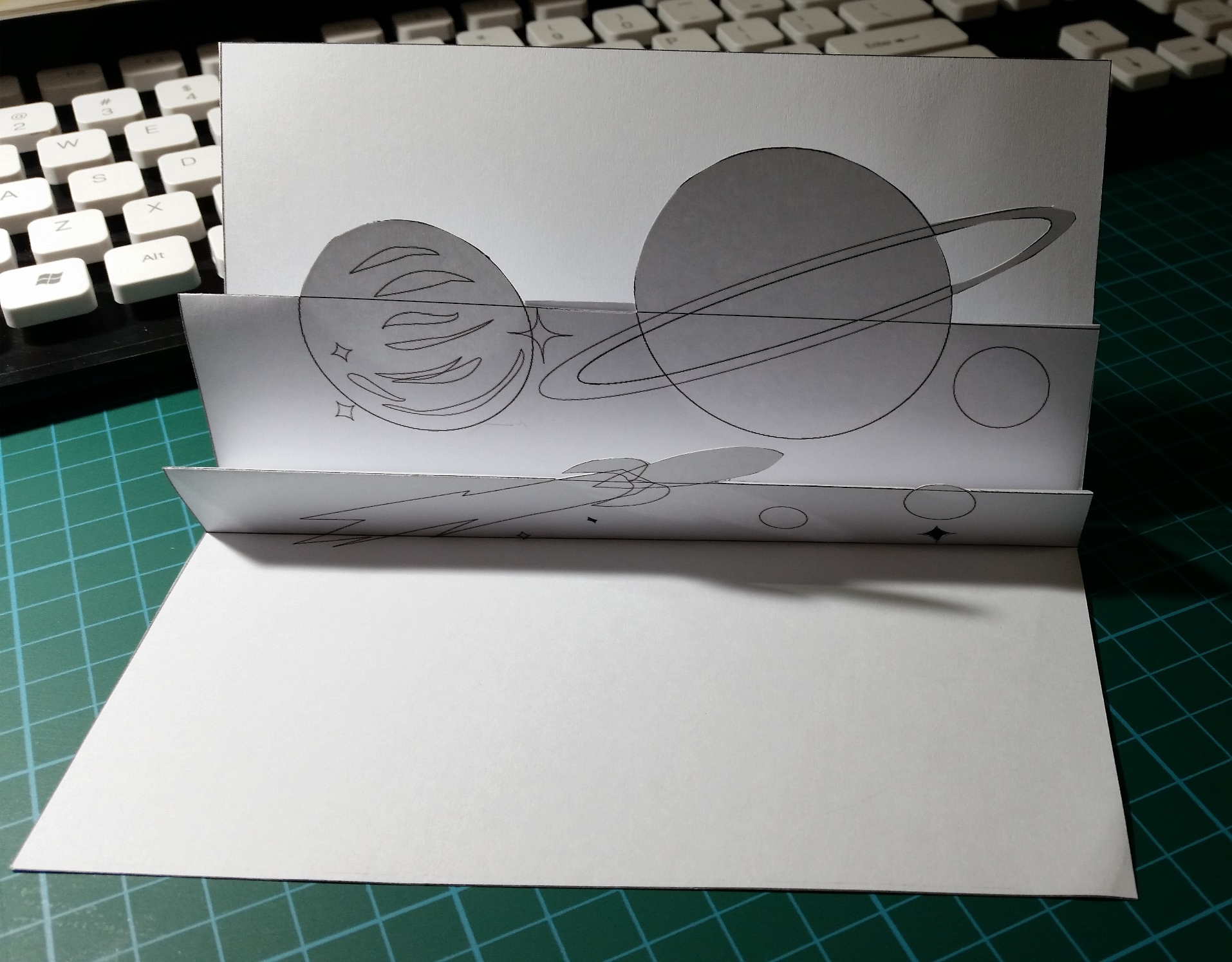
Brainstorming and Development
After the initial visual research, I tried to branch out on the third concept as I felt that it was the one that most suited the brief.
I brainstormed out 2 ideas based on the mechanism of the pop up card: planets and oceans – as both were interesting landscapes that had elements that could be stacked against each other.
Based on these 2 ideas, I made 2 prototypes to try out the visual effect. I made a half-sized model to measure and check dimensions, then created the illustration draft based on those measurements.
The initial prototype for measurements was especially important as the illustrations had to stay within those boundaries, especially when folded together so as not to leak out of the card. At the same time, the different layers (I decided on 2) had to be balanced with each other propotionally so each had enough space to contain the illustrations but was also different enough that the stacking effect would be obvious.
After confirming the dimensions, I created the mini prototype with illustrations for each concept.
After feedback from class critique, it was felt that the second concept (oceans) fitted the brief better. However, while creating the prototype, I realised that the connectors were too small and thus made the pop-up very flimsy. Smaller parts such as the steam from the whale’s blowhole and the dolphin were also very fragile. Thus there was a need to revise the design to make it more secure.
Further feedback was also given that there could be a stronger narrative in the card to create better flow. Also, as I mainly focused on the mechanism itself, I now had to think about the placement of text and narrative.
After the first trial, I edited the design, and added in the required body copy, sample text and logo. I tried to create some form of narrative as well in the form of an additional caption (hope your day goes swimmingly!) to tie in with the brief and the little fishes to aid the viewer in the reading order.
